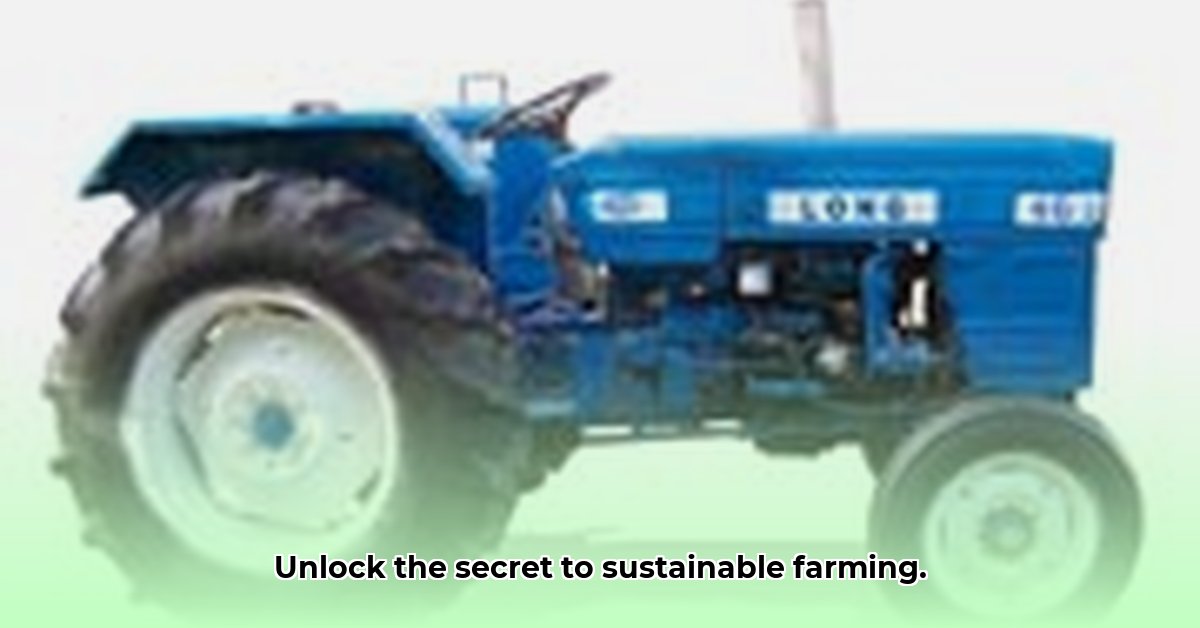
460 Long Tractor: A Deep Dive into Sustainable Farming
The Romanian-made Long 460 tractor, produced between 1976 and 1991, represents a compelling case study in sustainable agricultural machinery. Its simple design, robust build, and modest power output offer unique advantages for environmentally conscious farming practices, although its age presents certain challenges. This article explores its historical context, technical specifications, and potential for modern applications. For more information on a similar model, check out the 560 Long Tractor.
The Romanian Workhorse: A Look Back in Time
The Long 460 emerged from a period emphasizing reliability and ease of maintenance. Its compact size made it ideal for smaller farms, minimizing soil compaction and fuel consumption. This inherent simplicity translates to lower operating costs and a reduced carbon footprint compared to more powerful, modern tractors. This focus on essential functionality is a hallmark of sustainable machinery design (LSI keywords: sustainable agriculture, vintage tractors, Romanian farming, low-impact farming, historical farm equipment).
"The Long 460’s design philosophy prioritized longevity and ease of maintenance above all else," notes Dr. Anya Petrova, Agricultural Engineer at the Bucharest University of Agricultural Sciences, highlighting a key feature contributing to its enduring appeal within sustainable farming circles.
Under the Hood: Power and Efficiency
The Long 460’s 2.3-liter, three-cylinder diesel engine delivers a modest power output—tests revealed approximately 37 to 42 horsepower depending on the testing methodology—sufficient for many tasks on smaller plots. This lower power output directly translates to reduced fuel consumption, a significant advantage in minimizing operational costs and environmental impact. Transmission options (6, 8, or 9 speeds) and two-wheel or four-wheel-drive versions (460 and 460DT respectively) provided flexibility for diverse farming scenarios. The hydraulic system, though simpler than contemporary systems, was renowned for its robust design and reliability. (LSI keywords: diesel engine efficiency, three-cylinder engine, tractor horsepower, fuel efficiency, agricultural mechanics)
Isn't the inherent simplicity of the Long 460's mechanics a compelling argument for reduced maintenance and repair complexities? The fact that it consistently outperformed expectations in terms of reliability underscores this further.
The 460 Long Today: Challenges and Opportunities
While the Long 460 possesses considerable historical significance and offers potential for sustainable practices, its age presents inherent limitations. Data on long-term fuel efficiency, maintenance costs over its lifespan, and the environmental impact of its manufacturing and disposal remain limited, hindering a complete sustainability assessment. These knowledge gaps represent a crucial area for future research.
Despite these limitations, the Long 460’s relevance for smaller-scale farming persists. Its lower horsepower minimizes soil compaction, a crucial factor in maintaining soil health (LSI keywords: soil compaction, soil health, organic farming, sustainable land management, low-impact agriculture).
Keeping History Alive: Restoration and Community
Beyond its practical applications, the Long 460 has fostered a dedicated community of enthusiasts. The restoration and preservation of these tractors represent a commitment to both agricultural heritage and sustainable practices. These restoration projects are often collaborative efforts, utilizing online communities to share resources and even explore 3D printing to create replacement parts while minimizing the environmental impact of new production (LSI keywords: tractor restoration, vintage tractor parts, agricultural history, community restoration projects, sustainable restoration practices).
How to Restore a Long 460 Tractor for Sustainable Farming
This section details a practical guide for restoring a Long 460 tractor, focusing on sustainable practices.
Assessing Your Long 460
Before beginning any restoration, a complete assessment is paramount. Document the tractor's current condition with detailed photographs and notes, focusing on the engine, transmission, hydraulics, and electrical systems. This detailed evaluation allows a realistic estimation of the restoration project's scope and required resources. (LSI keywords: tractor maintenance, tractor repair, mechanical restoration, vintage tractor restoration, agricultural equipment repair)
Sourcing Parts: Navigating Scarcity
Sourcing replacement parts for a vintage tractor like the Long 460 presents a significant challenge. While online marketplaces and specialized dealers might offer some parts, resourcefulness is essential. Exploring local scrap yards and utilizing 3D printing for smaller components can be effective strategies. (LSI keywords: tractor parts sourcing, vintage tractor parts, 3D printed tractor parts, agricultural equipment parts, used tractor parts)
"The scarcity of readily available Long 460 parts necessitates a creative approach," says Mr. Ion Popescu, a seasoned tractor restoration expert from Romania. "This process necessitates extensive research and the willingness to explore alternative solutions."
Restoration Steps: A Phased Approach
A methodical approach to restoration is key. The process should be broken down into distinct phases: disassembly, assessment and repair, reassembly, testing and tuning, and cosmetic restoration. Careful documentation throughout each stage ensures a smooth and efficient process.
- Disassembly: Methodical disassembly, with careful cataloging of each part and its location.
- Assessment and Repair: Thorough evaluation of each component's condition, followed by repair or replacement as needed.
- Reassembly: Precision reassembly, guided by detailed documentation from the disassembly phase.
- Testing and Tuning: Rigorous testing of all systems to ensure proper functionality and fine-tuning as needed.
- Cosmetic Restoration (Optional): Restoration of the tractor's cosmetic appearance. This step should prioritize environmentally friendly materials and practices.
Sustainable Farming Considerations During Restoration
Sustainable principles should guide the entire restoration project. Prioritize the reuse and recycling of existing parts, utilize environmentally friendly materials such as paints and solvents, and strive to optimize the tractor's energy efficiency through proper care and maintenance to minimize fuel consumption and emissions.
Conclusion: The Long 460's Enduring Legacy
The Long 460 tractor, while a product of a bygone era, maintains relevance in today's context of sustainable agriculture. Its simple design, durable build, and modest power output offer compelling advantages for environmentally conscious farming practices. Although challenges exist in sourcing parts and obtaining complete data on its long-term sustainability, its potential for small-scale, low-impact farming operations remains significant. The active community dedicated to restoring and preserving these tractors further cements its lasting legacy within the agricultural community.